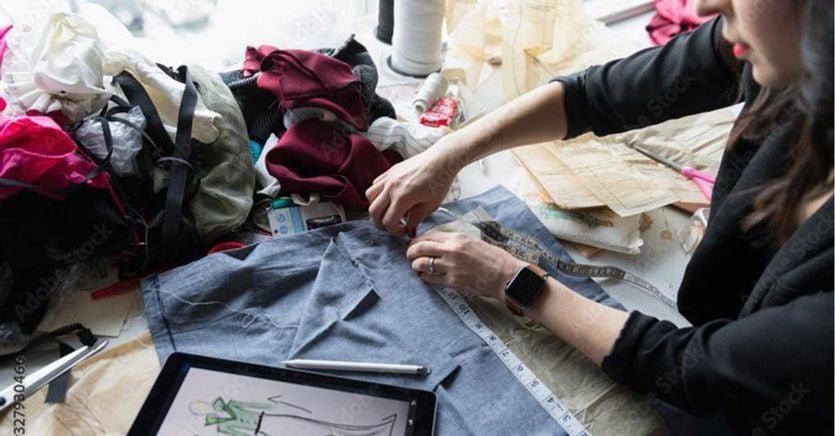The textile-fashion-accessory (TMA) in 2019 had close to one hundred billion in turnover, but was among the sectors most affected by the pandemic and closed 2020 with a loss of 26%. The forecasts after the positive signs of the first quarter are of a V-shaped recovery, which from the downstream part (clothing and accessories) should extend up the supply chain, which has always been more fragile because it is made by SMEs and micro-enterprises with margins lower than brands and large groups. To build the future, however, tens of thousands of professional skills are needed, at least 10 thousand of which, in fact, missing or impossible to find, because yet to be trained, professional figures that Carlo Capasa, president of the National Chamber of Fashion, imagines as “facilitators” of the digital turnaround and sustainable that the TMA must embrace.
The “classic” figures
The recent Excelsior survey by the Chambers of Commerce foresees, between August and October, about 25 thousand hires in the textile-clothing-footwear “alone”. 36% of companies reported difficulty (but not impossibility) in finding and most of these probable hires are in the production area, followed by sales and marketing, logistics quality control. The most difficult professions to find are machine programmer, textile designer, leather goods manufacturer, quality control officer and tailor. «The Excelsior survey is a good starting point and makes us cautiously optimistic for the future in the medium and long term – explains Carlo Capasa -. But we have to imagine a different world of work in the post Covid era. The pandemic has accelerated changes taking place in all sectors and in the TMA in particular. To ride the changes, new professionals are needed, which we could define as architects of a corporate culture based on digital and sustainability ».
Loading…
An “architect” in every company
Capasa is in his third term as president of the Chamber of Fashion, the association that organizes, among other things, the Milan fashion weeks and over the years has strengthened ties with the Municipality, the Chamber of Commerce, Pitti Immagine, Fiera Milano. and Confindustria Moda: «We are all aware of the Italian leadership in medium and high range textile-fashion – he underlines -. Always remember that 70% of the luxury sold globally by European and even American brands is produced in Italy. A heritage that must be managed not as a museum, but as a set of artisan and manufacturing know-how that must keep up with the times ». For the president of the Chamber of Fashion, this means reviewing every business process and every link in the supply chain with a view to digitization and environmental and social sustainability, imposed by consumers, even before the legislator.
The potential of young people
In 2019 the Tma was made up of 64 thousand companies, but in 2020 the Italian fashion system, the most important component of Confindustria Moda, estimates that it has lost about 6,500 companies (15% of 56 thousand). If the second half of 2021 and 2022 show the expected V-shaped recovery, all those that remain, strengthened by the exit from the pandemic tunnel, will resume investing and there will be tens of thousands of figures necessary to build the supply chain of the future. “Ideally, there should be a point of reference for the digital-sustainable choice in every company, but the largest and listed companies, which already have managers who deal with sustainability and inclusivity, will certainly set an example – explains Capasa -. We are talking about 10 thousand jobs and 40-50 thousand in the coming years, because every professionalism that already exists will have to evolve, enrich itself, with digital and sustainability skills, which must become the new work tools and the new “mental habit” in every moment of our lives, working and beyond ».
The training knot
And here we are with the painful notes: there is and will be a demand for new professionals, there is no offer and above all there is no training. The chicken or the egg comes first, would be the question to ask, as if it were one of those paradoxes dear to the Greek philosophers. But it actually has something very concrete: formation generates work, but formators must be trained and coordinated and this is also work. «In Italy we have many excellent fashion and design schools and more and more companies invest in internal academies – recalls Carlo Capasa. – But more coordination would be needed to bring supply and demand together, with the help of institutions and the public education system, as happens in Germany, where every year, for each sector, from medicine to mechanics, the need for jobs is estimated work and therefore the contribution that schools must ensure ».
